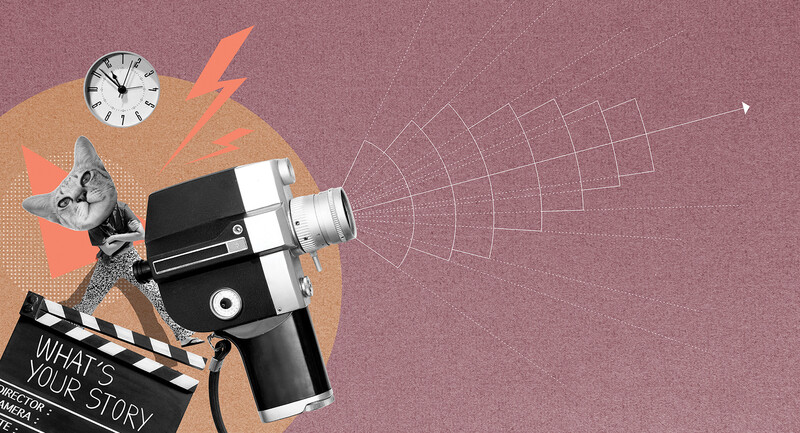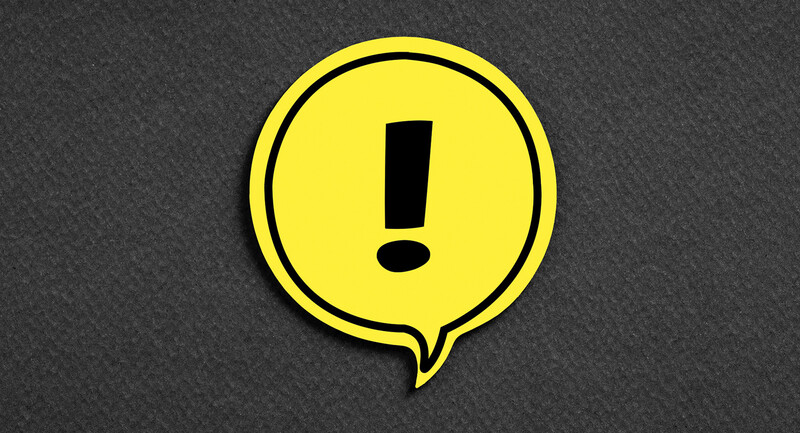The Educators
Amy Fast (@fastcrayon) 39,000+ followers
High school assistant principal, McMinnville School District, Oregon, and author of It's the Mission, Not the Mandates: Defining the Purpose of Public Education (Rowman & Littlefield, 2015).
Larry Ferlazzo (@Larryferlazzo) 65,000+ followers
Teacher at Luther Burbank High School in Sacramento, California; coauthor of The ELL Teacher's Toolbox: Hundreds of Practical Ideas to Support Your Students (Jossey-Bass, 2018); and author of numerous other books on instruction.
Baruti Kafele (@PrincipalKafele) 45,000+ followers
Urban teacher and principal in New Jersey for more than 20 years, and author of many books, including Is My School a Better School BECAUSE I Lead It? (ASCD, 2018).
Pernille Ripp (@pernilleripp) 54,000+ followers
Seventh grade teacher, founder of the global literacy initiative The Global Read Aloud, and author of Passionate Readers: The Art of Reaching and Engaging Every Child (Routledge, 2017).
Eric Sheninger (@E_Sheninger) 140,000+ followers
Senior fellow and thought leader on digital leadership with the International Center for Leadership in Education (ICLE), and coauthor of Learning Transformed: 8 Keys to Designing Tomorrow's Schools, Today (ASCD, 2017).
Jose Luis Vilson (@TheJLV) 29,000+ followers
Math educator at a middle school in New York City; founder of #EduColor, a coalition dedicated to the uplift of people of color in education; and the author of This is Not a Test (Haymarket, 2014).
When and why did you decide to get involved on Twitter?
Ripp: I needed inspiration. I felt incredibly alone in my teaching practices, and I hoped there were others out there sharing ideas that could help me grow as an educator. In the beginning I loved the fastness of it all, the instant inspiration, the quick and easy way to share. But as I got more invested, I realized that Twitter, for me, was not just about the instant connections, but about the meaningful ones, and the opportunity to be exposed to the work of people who were not surrounding me at home. Through Twitter, I could learn from those who were paving the way for many critical conversations in our society, including childhood literacy, inequity, and social justice.
Kafele: Another ASCD author, Robyn Jackson, introduced me to Twitter as a way of promoting myself and my book. I confess that I thought it was the most ridiculous thing in the world. I told her it didn't make sense and that I would probably not participate. Well, a few months later, I started to tinker with it, and now, 45,000 followers later, I'm hooked! Not a day goes by without me tweeting something.
Fast: I also got involved with Twitter after I received a book contract. I really hate all forms of self-promotion, so instead of posting about my book, I decided to post about the ideas that I discuss throughout the book. I wrote a book because I wanted to impact change on education policy in this country. What I soon realized is that those 140 characters (now 280) likely had more impact on influencing change than any book I could write on education policy.
Vilson: Well, Twitter just messaged me to say I started my account 10 years ago, so happy anniversary to me! When I first started, I was just trying to get a sense of how teachers were talking online, what blogs were out there. I had quick chats with people about education and classroom things. Then I realized there is a bigger Twitter world out there where people are talking about really hard issues. And yet education on Twitter had seemed to have siloed itself from these issues. That's when I knew I had to really force the issue—that we had to have these hard conversations about race in education. That's how the hashtag #EduColor began.
How long does it take to develop a robust network on Twitter or other digital platforms?
Sheninger: The time it takes to develop a strong network on Twitter or any social media platform depends on the quality of the content you share and create as well as the time you put in. Educators are keen for more insight on practical ideas aligned to research and evidence of actual improvement. Show how your innovative practices are improving learning outcomes.
Fast: I didn't really "get" Twitter when I first started. One of the first posts I ever wrote somehow got a few hundred retweets in the span of a few hours. I was shopping with my mom, and I remember telling her that there was something wrong with my phone: It kept buzzing at me. I'm not sure how I developed the network I have other than I put the thoughts and ideas out there that keep me up at night. They must be keeping others up at night, too.
Vilson: I think there are too many people who are looking for a set of guidelines on social media. They want influencers to help boost their messages, but they never focus on the craft of what they are doing. If you want to be a good tweeter, blogger, or whatever, you have to be a good writer. You have to have ideas. That's how you build an audience. Find people who are talking about things close to your heart and are doing it from an authentic perspective. Do a lot of reading and research. Don't be afraid to revise.
Newbies are often advised to follow certain hashtags or prominent people as a way to "do" Twitter, but sometimes that's akin to walking into a crowded party and not having any idea who to start talking to or where the food is. How does one go about building a network, really?
Ferlazzo: Word of mouth is the way to go! Begin by following people who you know personally or whose work you respect and see whose work and tweets they share.
Sheninger: Hashtags are a good way to begin to build your network, as you can spread ideas and strategies to an established group. The key is to share original work aligned to the specific hashtag. The more practical the idea, the quicker your network will form. Other elements that go into network-building are honesty, transparency, actively participating in discussions, and the right balance of sharing your own work with that of others. The true strength of any network is not how many people follow you, but the quality of the people you follow and connect with.
Fast: My inbox is crowded with people asking me to retweet their blog, post something about their book, or endorse their product. This is pretty off-putting for me. It's not that I don't want to help them out, but I'm more inclined to respond to a teacher who is asking for advice or engage in a conversation with someone who genuinely wants to hash out an idea.
Kafele: Position yourself as a thought leader. Tweet thoughts, ideas, articles, or quotes that would be of interest or intriguing to colleagues. Chances are that many will retweet these tweets, which will increase exposure and contribute to building a network. What's key is a consistency in tweeting quality information.
What's the most valuable information, advice, or lesson you've gotten from someone in your digital network? How did you use it to improve your practice?
Fast: There's this guy named J Walkup on Twitter (@jwalkup), and for so many years I've counted on him to rip my tweets and thoughts apart. Many of his beliefs are a 180-degree difference from mine, and often our debates enrage me. But we have never unfollowed each other or stopped engaging in conversations, even heated ones. When we agree on something, we throw a little virtual party for ourselves in the feed.
What started as a contentious online relationship (which so many are because it's so easy to take the humanity out of online interactions) became a friendship based on mutual respect for diversity of thought. We know we both are a bit extreme in our beliefs, and we balance each other out. The most valuable part of Twitter by far is not the echo chamber but the debate. I appreciate it when people push my thinking.
What common mistakes do you see educators make when they try to develop a professional network or community on Twitter?
Vilson: There are folks who are generally trying to create positive change, but they aren't being smart about who they are reaching out to. You might be eager to get someone with 100,000 Twitter followers to retweet your content, but not really pay attention to what that person is actually adding to the conversation. People focus too much on quantity vs. quality. The quality is what brings people back.
Sheninger: Here are three. Too self-promotional, to where it becomes humblebragging. Tagging loads of people in your tweets for the main purpose of getting them to share your tweet. Not responding to questions or comments that are directed to you.
Ferlazzo: Whether you're starting work in a new school, joining a new sports team, or connecting with a new social group, the best advice I can offer is to listen and observe for a while. Get a lay of the land. Learn the general etiquette. Not following that advice can be a big mistake—on Twitter and everywhere else.
On average, how much time do you spend each day on Twitter? Do you have any personal rules for unplugging?
Ferlazzo: Far too much time. I need to get a life!
Fast: I usually get on Twitter after my kids go to bed at night. I'm often on there for an hour or so. I consider it my professional reading. If I'm not on Twitter, then I'm reading a book or an article.
Sheninger: We all can allocate at least 15 minutes a day to learn and get better. Why not make the time to do this on a platform like Twitter where we can personalize the experience? Balance is key.
Ripp: I do the quick check-ins a lot as opposed to spending a long time at once. I do try to reply to every single person that tweets me specifically, but sometimes that is a losing battle. I am still working on the balance between my online learning life and the life happening right in front of me every day.
Do you think social media platforms are a give-and-take relationship? That is, to receive good content, you also have to create it.
Ripp: I think you should make it a give-and-take, if not through creating your own content, then by giving feedback. You do not have to wait for someone to give you space in the conversation—make your own space. When I started connecting with others and writing my own blog, I didn't do it for anyone else, I did it for myself, my own growth, and my own need to reflect. I didn't expect anyone to connect with it, and I continue to be surprised to this day when others tell me that something I created or shared helped them grow.
Sheninger: One can lurk on social media and acquire proven strategies that have been successfully implemented in schools. If you are willing to take the ideas that others are openly giving you, then a positive relationship exists. Creating content is not a means to an end if you don't want it to be. But what creates relationships in connected spaces is the vetting of and then using other people's content that leads to evidence of improvement.
What do you get out of Twitter (or other online connections) that you haven't been able to get from a personal colleague?
Sheninger: Timely, practical, and specific feedback when and where I need it. The convenience of having a 24/7 support network that spans the globe is quite empowering.
Kafele: Brevity. A lot is said in much fewer words.
Ferlazzo: My colleagues are great and know a lot. However, they are a pretty small number compared to the huge number of educators on Twitter.
Ripp: In my previous district, I often felt like the lone nut on the island when it came to our everyday practices, but now I know there is a whole group of educators worldwide who share many of my same ideals or have much better ideas than I could ever dream of. I am grateful that they share their practices in order for all of us to learn.
One worry or complaint from people who are trying to build a network online is that there's too much content. How do you sort through the noise to find the things and people who are most valuable to you?
Sheninger: Be selective about who you connect with. Unfollow those who clog up your streams with information or posts that don't align to your professional goals. You can also use a tool like TweetDeck to manage your connections and hashtags in specific columns. By doing this, you essentially are applying your own filter to your feed.
Ferlazzo: One great Twitter feature is the ability to create "lists" of people you follow. So, it's easy to create a list of "must follow" people, other lists for specific purposes, etc.
Vilson: Because of the difficulty of the conversations we have via the #EduColor hashtag, related to race, religion, sexual orientation, and other topics, I have seen many colleagues—especially black women educators—get harassed or threatened by trolls. I would never suggest anyone continue in a space where it has become too toxic. Definitely steer away from that.
But I have also seen people shut down when a conversation becomes difficult or heated, and I don't want to dissuade people from engaging with people who disagree with you or have other viewpoints. Find a way to ask good questions, break it down for people, find out their motivations. Sometimes, if you ask two or three questions, find their motivation, then you can understand how to deal with people who disagree with you.
Ripp: I don't want my Twitter feed to be people that think or look just like me; I really want it to be an experience where I can hear the words of many kinds of people, even those I do not agree with, so that I can grow not only as an educator, but also as a human being. I want my Twitter feed to give me the best learning experience possible.









